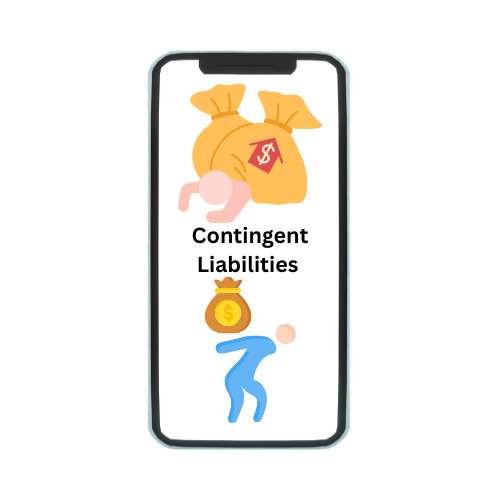- In the world of finance, understanding the nuances of different financial instruments and concepts can be the key to successful trading and investment. One such concept that plays a crucial role in currency trading and international finance is the forward premium. A forward premium refers to the condition where the forward exchange rate of a currency is higher than its spot exchange rate, indicating that the future price of a currency is expected to be higher than its current price.
- This concept is essential for traders and investors because it provides insights into future currency movements, helping them make informed decisions. Forward premiums are influenced by various factors, primarily the interest rate differential between two countries, as explained by the interest rate parity theory. By understanding forward premiums, investors can hedge against potential currency risks and speculate on future currency values, thereby optimizing their financial strategies. Whether you are an experienced trader or a novice investor, grasping the intricacies of forward premiums is vital for navigating the complex landscape of international finance.
What Is A Forward Premium?
- A forward premium occurs when the forward exchange rate of a currency is higher than its current spot exchange rate, suggesting that the future price of that currency is anticipated to be higher than its present price. This situation arises in the context of forward contracts, which are agreements to exchange currencies at a predetermined rate on a future date.
- For instance, if the current spot rate for the EUR/USD currency pair is 1.10 and the forward rate for a one-year contract is 1.15, it means the Euro is at a forward premium relative to the US Dollar.
- The concept of a forward premium is essential for traders and investors as it helps predict future currency movements, manage risks, and formulate trading strategies. It is often influenced by the interest rate differential between two countries, where currencies from countries with higher interest rates tend to exhibit forward premiums compared to those with lower interest rates. Understanding forward premiums enables market participants to hedge against potential currency fluctuations and capitalize on expected changes in exchange rates.
Determining The Forward Premium
- Interest Rate Differential: The primary factor influencing a forward premium is the difference in interest rates between two countries. According to the interest rate parity theory, the currency of the country with a higher interest rate will generally trade at a forward discount, while the currency of the country with a lower interest rate will trade at a forward premium.
- Market Expectations: Traders’ and investors’ expectations about future economic conditions, inflation rates, and central bank policies can impact forward premiums. If the market anticipates significant changes in these factors, the forward rates will adjust accordingly.
- Political and Economic Stability: Countries with stable political and economic environments are more likely to have forward premiums. In contrast, currencies from countries with high political risk or economic instability might trade at a forward discount due to the perceived higher risk.
- Supply and Demand: The balance of supply and demand for a currency in the foreign exchange market also affects the forward premium. High demand for a currency can drive its forward rate above the spot rate, creating a forward premium.
- Currency Hedging: Businesses and investors engaging in hedging activities can influence forward premiums. When there is a high demand for forward contracts to hedge against future exchange rate fluctuations, this can lead to an increase in the forward rate relative to the spot rate.
- Speculative Activities: Speculators who buy and sell currencies based on expected future movements can impact the forward premium. Their activities can lead to changes in forward rates as they react to new information and market conditions.
Forward Rate Premium Calculation
- Formula: The forward premium is calculated using the formula:
Forward Premium (%) = ((Forward Rate−Spot Rate) / Spot Rate) × 100
- Identify Spot and Forward Rates: First, identify the current spot rate and the forward rate for the currency pair in question. The spot rate is the current exchange rate, while the forward rate is the agreed-upon exchange rate for a transaction that will occur at a future date.
- Subtract Spot Rate from Forward Rate: Subtract the spot rate from the forward rate. This difference shows the amount by which the forward rate exceeds the spot rate.
- Divide by Spot Rate: Divide the difference obtained in the previous step by the spot rate. This step normalizes the difference to the current exchange rate, allowing for comparison.
- Convert to Percentage: Multiply the result by 100 to convert the decimal into a percentage. This percentage represents the forward premium, indicating how much higher the forward rate is compared to the spot rate.
- Example Calculation: For example, if the spot rate for USD/JPY is 110 and the one-year forward rate is 115, the forward premium calculation would be:
Forward Premium (%) = ((115−110) / 110) × 100 = 4.55%
- Interpretation: This result means that the forward rate is at a 4.55% premium compared to the spot rate, suggesting that the market expects the value of USD/JPY to be higher in one year.
The Forward Premium Puzzle
- Definition: The forward premium puzzle refers to the empirical anomaly where currencies with higher interest rates tend to depreciate rather than appreciate, which contradicts the interest rate parity theory.
- Interest Rate Parity Theory: According to this theory, the difference in interest rates between two countries should be equal to the difference between the forward exchange rate and the spot exchange rate. This implies that currencies with higher interest rates should have higher forward rates, leading to a forward premium.
- Empirical Findings: Contrary to the theory, empirical studies have found that currencies from countries with higher interest rates often depreciate instead of appreciating. This unexpected behavior is what constitutes the forward premium puzzle.
- Potential Explanations: Several hypotheses have been proposed to explain this puzzle. One explanation is the existence of risk premiums, where investors demand higher returns for holding riskier currencies. Another is market inefficiencies, where deviations from rational behavior and perfect information can lead to anomalies.
- Behavioral Finance: Behavioral finance theories suggest that psychological factors and investor behavior may contribute to the puzzle. Overreaction to news, herd behavior, and other cognitive biases can lead to unexpected currency movements.
- Impact on Trading Strategies: The forward premium puzzle complicates the development of trading strategies based on interest rate differentials. Traders cannot rely solely on interest rate parity to predict future currency movements and must consider additional factors and market conditions.
- Ongoing Research: The forward premium puzzle remains an active area of research in finance. Economists and financial experts continue to explore new models and theories to better understand and explain this anomaly.
Conclusion
Understanding the concept of forward premiums is crucial for anyone involved in currency trading and international finance. A forward premium occurs when the forward exchange rate of a currency is higher than its spot exchange rate, indicating an expected appreciation of the currency in the future. Determining forward premiums involves analyzing factors such as interest rate differentials, market expectations, and political and economic stability. Calculating the forward premium provides valuable insights into future currency movements, aiding in risk management and strategic decision-making. However, the forward premium puzzle challenges conventional theories by showing that currencies with higher interest rates tend to depreciate, contrary to expectations. This anomaly underscores the complexities of the foreign exchange market and the limitations of traditional models. As traders and investors navigate this intricate landscape, they must consider a range of factors and remain adaptable to new information and market dynamics. Ultimately, a deep understanding of forward premiums and their underlying mechanisms enhances the ability to make informed, strategic financial decisions in an ever-evolving global market.
Frequently Asked Questions(FAQs)
Investors use forward premiums to hedge against potential currency risks and to speculate on future currency movements. By locking in a forward rate, they can protect themselves from adverse changes in exchange rates
Forward premiums affect the cost of international trade and investment. A higher forward premium can make exports more expensive and imports cheaper, influencing trade balances and investment decisions.
In finance, forward premiums are used to calculate the future value of currencies, manage risks, and develop trading strategies. They are essential for pricing forward contracts and other derivative instruments.
A forward premium occurs when the forward rate is higher than the spot rate, while a forward discount happens when the forward rate is lower than the spot rate. Both concepts help in understanding future currency price expectations.
Forward premiums are crucial for hedging because they allow businesses and investors to lock in exchange rates for future transactions, reducing the uncertainty and potential losses from adverse currency movements.





